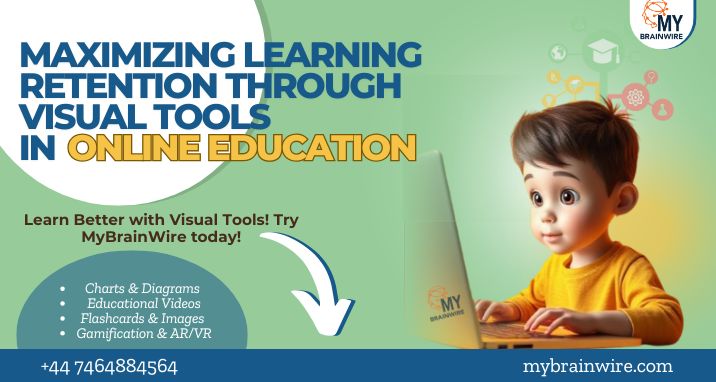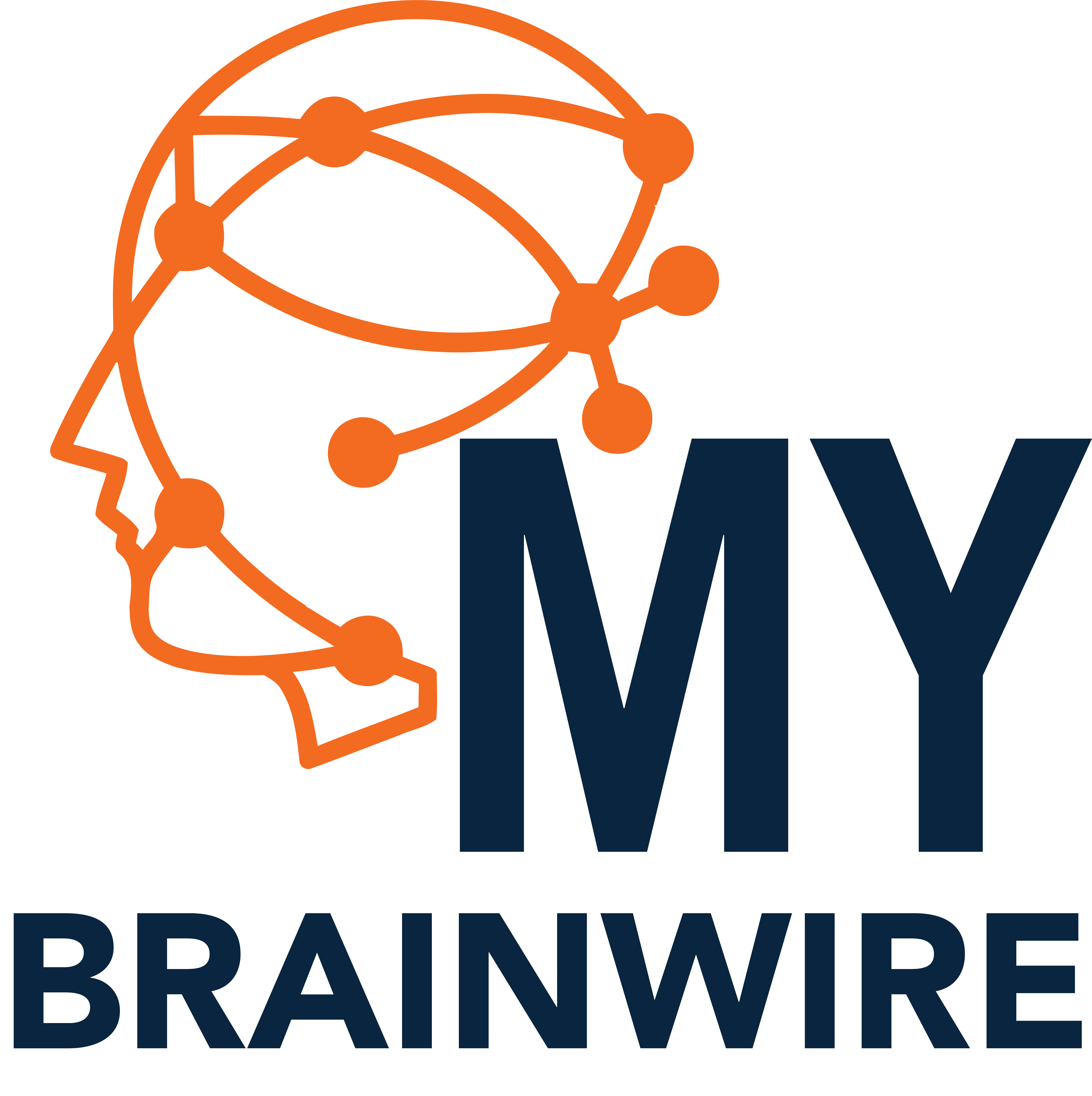
How to Use Visual Learning Tools in Online Education for Better Retention
Maximizing Learning Retention through Visual Tools in Online Education
The progressing evolution of the online education has changed the modality of the evolution of studying for the better. However, with the development of the virtual classroom increases the issue of how to consolidate knowledge effectively. Here come the visual learning tools – one of the most effective teaching strategies that correlate with the work of the brain. With those tools, both the students and the best tutors are able to foster and make learning more fun and memorable experience.
Why Visual Learning Tools Are Effective in Online Education
Infographics are not only colorful and attractive, they also work as powerful mnemonic devices by helping learners ‘visualize’ lesson content more straightforwardly. Here’s why they are indispensable in online learning:
Simplifying Complex Information: The use of diagrams, charts, and illustrations provide simple handouts and disintegrate complex concepts. This is particularly helpful in e-learning because understanding is more important here than any other achievement.
Aligning with Brain Processing: When it comes to perceiving information, our brains are designed in such way as to comprehend illustrations faster than written content. Visuals affect both parts of the brain, which are the rational and sentimental part making learning easier to retain.
Boosting Engagement: If students’ vision grasps something they are learning, they focus more and also enhance comprehension of course content.
Types of Visual Learning Tools to Enhance Retention
Infographics and Diagrams
Graphics serve as the discovery tool in the context of the online education. These provide huge volumes of data in a limited area and in a formatted way that has to entice the viewers. They are used in writing a summary of a lesson or in attempting to teach concepts that are complicated; the use of infographics ensures students get an overview of the general concept.
Example: A teacher can use of a digital timeline infographic in telling historical events by way of creating the structured and organized plan to help the students easily follow the sequence of events and relate with each other.
Interactive white board and digital charts
Technological pointers can be relied on to make lessons more interesting, thus enforcing what is taught through active participation. Whiteboards can be used by online tutors for illustrating, writing text or working with students in real-time.
Why It Works: Making the students to participate in the learning process leads to increased feeling of being part of that activity and thus increases their participation rates.
Mind Maps and Concept Maps
These tools are good for visual presentation of how concepts appear to be interconnected. From first-person perspective, they offer satisfactory outlines of topics in which students can visualize how concepts relate to each other.
Pro Tip: Mind maps are best used in fields that are littered with inter-dependencies such as literature or biology.
Flashcards
As a small piece of paper, a flashcard may look primitive in the context of e-learning, but they are efficient. They help to recall information or facts quickly and they bring back information through repeating.
Best Use Case: Employ flashcards for terms related to vocabulary, formulas or dates where the student can quickly refer and find the content during an exam.
How to Integrate Visual Tools Effectively into Online Learning
Use Visuals to Summarize Lessons
Once a complete lesson has been delivered, lesson evaluation in the form of a graphic organizer supports the lesson objectives. Thus, charts, graphs or diagrams, represent the core of a subject and help the students as a form of quick reference.
Example: Wrap up an online lesson on scientific research methods by having students complete a flowchart graphic that demonstrates the stages of the scientific process so that students can easily manipulate the sequences and understand the relations between the stages.
Incorporate Interactive Visuals
Quizzes drag and drop questions or any element where we can participate in a tutorial in a kind of game is engaging. There are many social pedagogy type platforms that people can use to facilitate learning while also being interactive to suit the visual learning needs of students.
Combine Visuals with Other Learning Modalities
When addressing diverse learners, it is advantageous to combine visuals with another kind of media such as auditory or written communications. These are some of the approaches that make learning experience to be full hand experience.
For Example: The lesson could be a biological one, where annotated diagrams might be used – diagrams with comments and audio descriptions for the audiences – for the learners with weak auditory or weak vision.
Benefits of Using Visual Learning Tools for Retention
Boosts Memory Retention: Paired images can effectively convey concepts that might be challenging to explain through words alone.
Increases Engagement: Visual aids capture attention and can be especially beneficial for students who thrive in a visually-oriented learning environment.
Deepens Understanding: When there is an attempt to explain the abstract concepts in the classroom, the best approach is to put into practice the ideas so that the children can understand and see the general relationship on any given subject.
Organizes Information: This approach enhances learning in a way whereby students understand the applicability of such concepts in other related practical fields.
The idea of using visual learning tools to support online classes is not only desirable but essential. Through interpreting difficult content, enhancing learner participation, and supporting recall, instructional visuals recreate the classroom in cyberspace. With the utilization of a simple infographic up to the clear interactive whiteboard, the best tutors or the best teachers can assist the learners in developing a doing attitude for successful achievement.
In this way, using all these tools together with each other will help online learning platforms and educators to make sure that learners not only absorb all content during the lesson, but can also recall it several days, weeks or months later.
Are you willing and able to turn your child’s learning into a fun and engaging process? Welcome to MyBrainWire, sign up now and find out the way our dynamic visual instructional aides work to benefit your child! Start Your Journey Now!
FAQs
- How do visual learning tools improve memory retention?
Visual learning tools help organize and present information in a way that is easier for the brain to process and remember, making learning more effective.
- Are visual learning tools effective for all types of learners?
While particularly beneficial for visual learners, combining visuals with other modalities can cater to all learning styles.
- How can I use videos to support learning retention?
Videos can simplify abstract concepts, engage students, and offer real-world applications of theoretical knowledge.
- What are some tools I can use to create interactive visual content?
Tools like Canva, Prezi, and Kahoot are excellent for creating infographics, presentations, and interactive quizzes.
- Can visual tools be used in all subjects?
Absolutely! From math to history, visual tools can adapt to any subject by presenting information in engaging and digestible formats.







